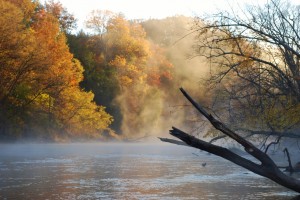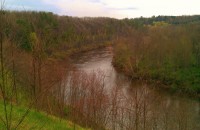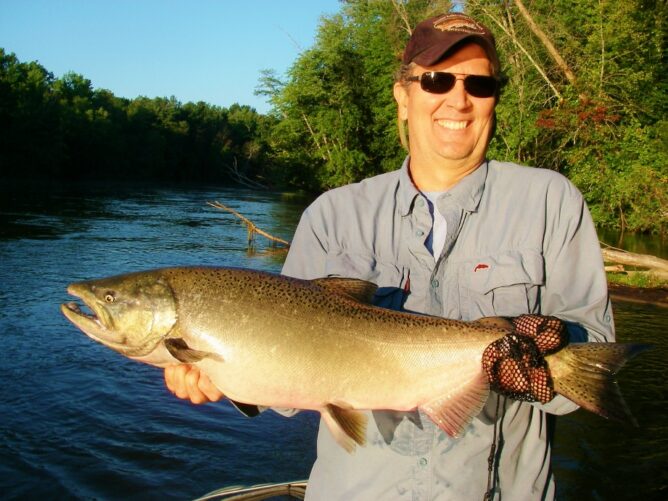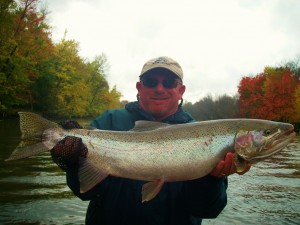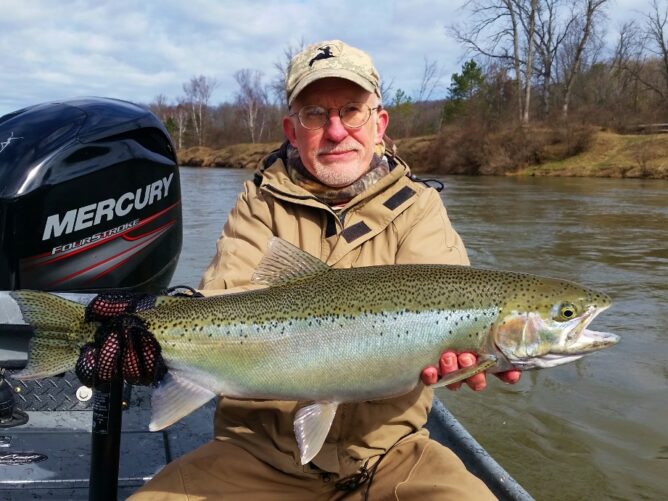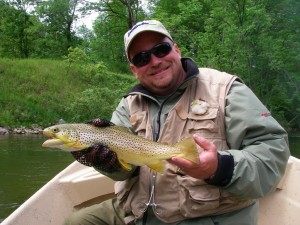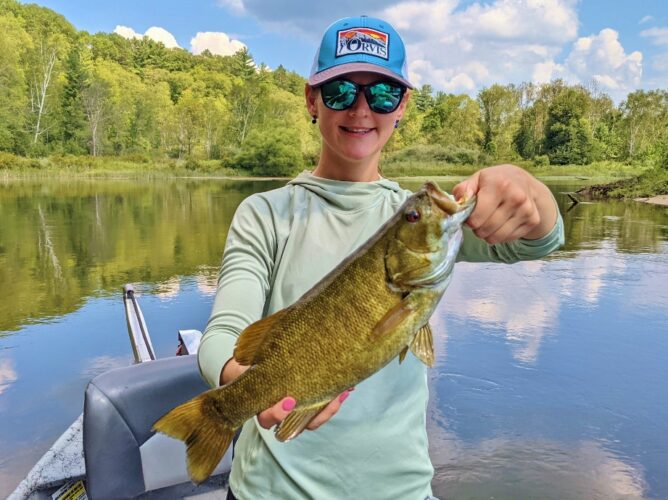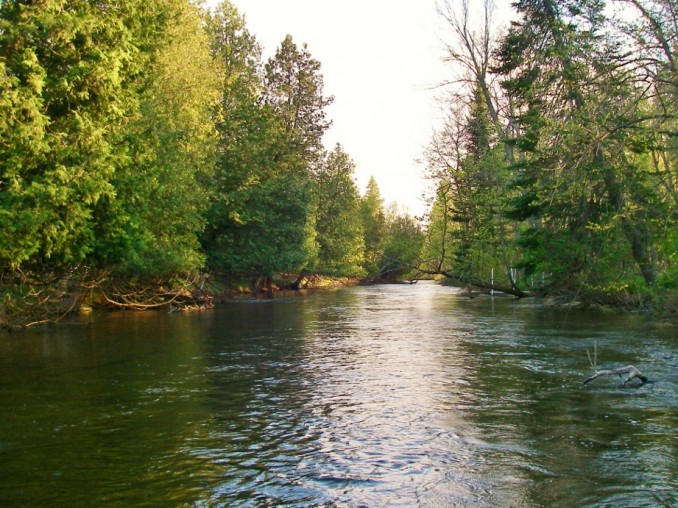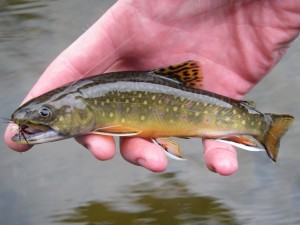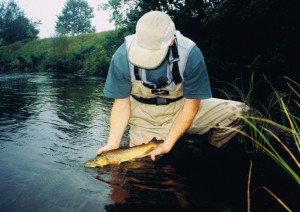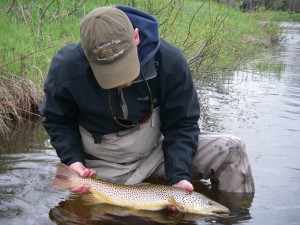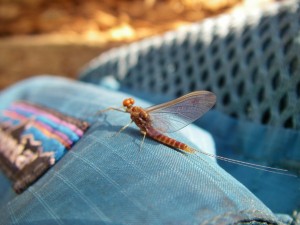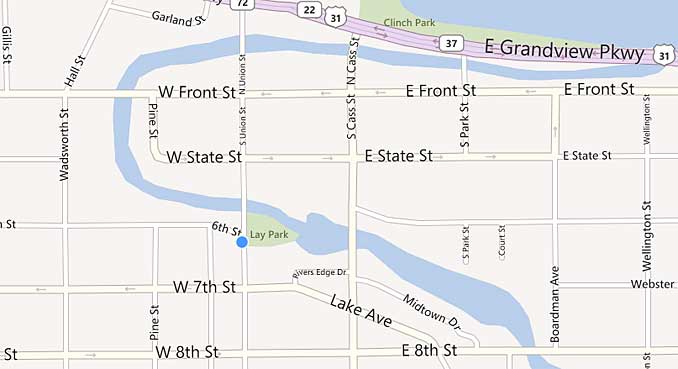Tippy Dam is known for its migratory runs of Steelhead and Salmon. The dam itself is the upper boundary of these great game fish that leave the big water of Lake Michigan and return to their natal river to take part in their spawning mission. Beyond steelhead and salmon, anglers will find healthy populations of both Brown & Rainbow Trout and Smallmouth Bass.
The river below the dam is some of the widest water in the state, varying from 200 – 300 feet in width. Depths vary depending on run, pool, tail-out relationship but all wading anglers will want to be cautious when on foot — especially in times of stained run-off conditions.
Much of the land adjacent to the river is USFS property and is open to the public. As you move downriver and approach the High Bridge access and Bridge, private property becomes intermixed.
Those fishing the Manistee are typically best served fishing from a boat as not only is it a strong and often deep river, but a lot of submerged logs can trip you up, a reminder of the lumbering days of northern Michigan.
The FishSalmon
Most anglers have heard of “The Big River” from stories told by a friend or articles in magazines. This river simply has one of the best salmon runs in the lower 48 states. Chinook (King) Salmon are the most common salmon, but Coho (silvers) numbers seem to be getting stronger each year.
While snagging was once legal years ago, the practice is no longer legal or acceptable. With the big fish come some crowds, so having the place to yourself isn’t a problem in the Spring and Fall. There are sections of the river that tend to be less populated and are some of my favorite sections.
Frankly, there are plenty of fish to go around in the Big Manistee.
Fall Steelhead
The Fall Steelhead follow the salmon into the river each year at the end of September and continue to build in numbers through the fall. When water temperatures are good and water/river levels are strong after a fall rain – things only get better. Hooking a fall steelhead that has been living on a steady diet of salmon eggs in 50-degree water can give you the hardest, most unpredictable and spastic fight you can imagine a freshwater fish could provide.
Throughout the winter anglers will find fall fish that become characterized as “winter fish.” With those hold-over fish comes trickles of new fish throughout the winter months, and those looking to get a cabin-fever-reliever can find some fish to play the game while getting away from the four walls that seem to close in on us during the Fall Steelhead winter months.
Spring Steelhead
Spring Steelhead are typically in the river system in good numbers from Mid-March through the first part of May. Fish that entered in the fall and winter join the newly arrived fish with their intent to spawn and thus the number/population of fish in the river are at their highest.
A Right of Spring, fishing for steelhead is one of the best times for people to get into steelhead and after a winter spent indoors, it feels good to get fishing again. Look for a warm rain to bring up the water temps and levels bringing up a fresh a “run” of fish in the river.
Read more about Steelhead here »
Brown Trout
Throughout the spring steelhead run, anglers usually find their fly rods bent, but not by the sheer weight of a Steelhead alone. There is a healthy population of Brown Trout in this section of the river that remains here all year. And why should they leave? The dam itself creates a tail water fishery which equates to a food factory.
Large populations of scuds and sowbugs provide a healthy diet for the fish when the midges and baetis aren’t around. In the spring and fall there are literally thousands of pounds of eggs drifting down the river from spawning fish for the trout to eat.
If that isn’t enough, there are lots of fry from steelhead, 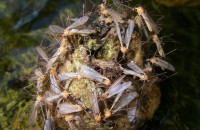 salmon, suckers and walleye which makes this fishery an all-you-can-eat fish dinner for the resident trout. Ever see a trout with stretch marks? This is the place where they live.
salmon, suckers and walleye which makes this fishery an all-you-can-eat fish dinner for the resident trout. Ever see a trout with stretch marks? This is the place where they live.
Trout fishing below Tippy Dam is scenic, solitary and peaceful river setting compared to the spring and fall seasons when the migratory fish are in season. Fishing remains good until early July when water temperatures become dangerous for trout survival but turn optimal for Smallmouth Bass.
Smallmouth Bass
Smallies migrate into the river in mid-June as water temps increase and provides both great streamer and top-water action through August. Targeting woody structure and rocky drop-offs, these “bronzebacks” are fun to watch as you feed them a fly. And once hooked, they pull hard and often throw in a couple of jumps to make it more fun.
Gaudy baitfish streamers one day, loud poppers and sneaky sliders the next offer the angler a variety of conditions during the warmer months making them a great alternative to trout fishing in the Summer months.
Read more on Smallmouth Bass here>>
Tippy Dam on the Manistee River
At one time the dam significantly fluctuated water levels on a daily basis when “peak electricity demands” required it. Through efforts of the Federation of Fly Fishers (Now FFI), Consumer Power and FERC, this now is a “run of river” where the amount of water flow above the dam is what comes out of the dam. This has helped eliminate some of the erosion and as a result has exposed a lot of gravel for both aquatic insects and natural reproduction.
Map & Directions
Tippy Dam is 25 miles West of the City of Manistee, just north of Wellston and East of Brethren 4 miles. Coming from Cadillac the drive is about 40 miles. It takes an hour from downtown Traverse City.
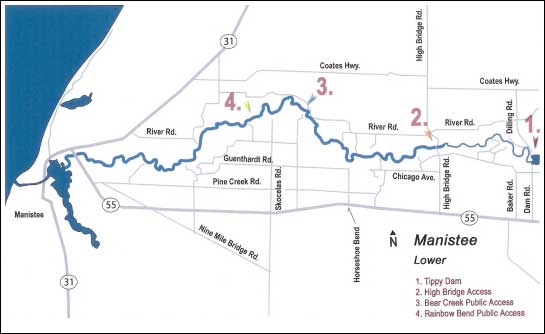
Map of the Lower Manistee River

